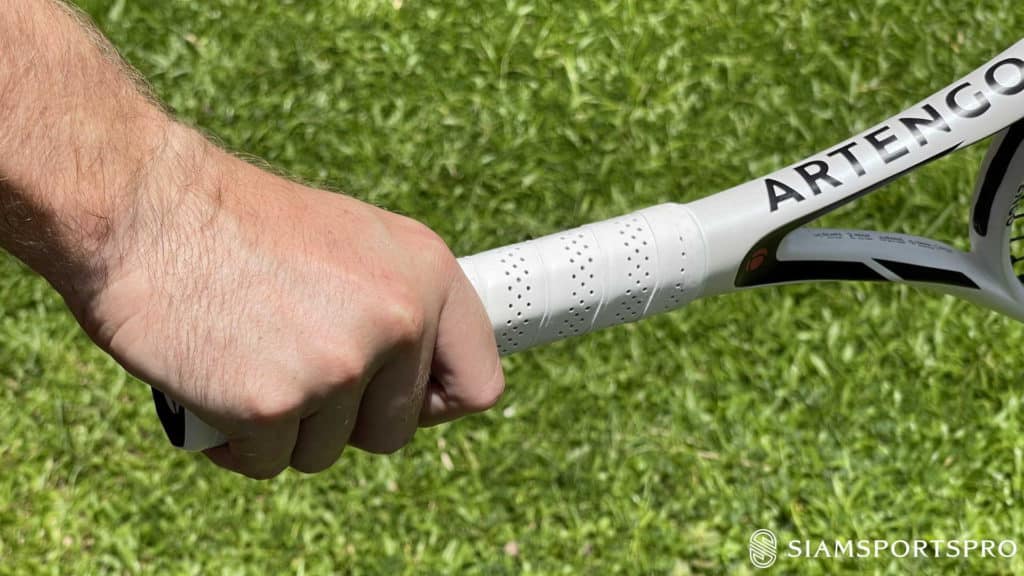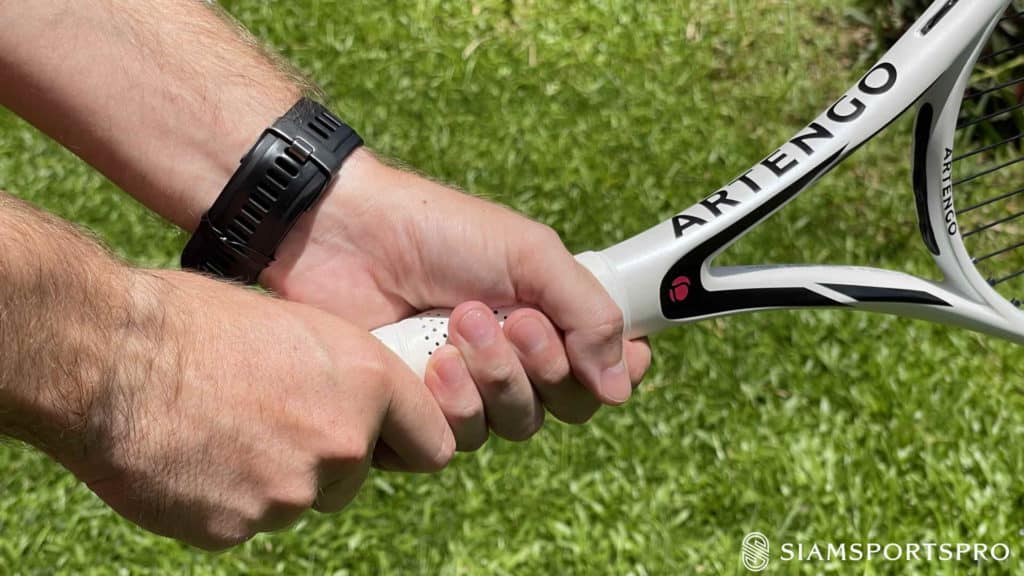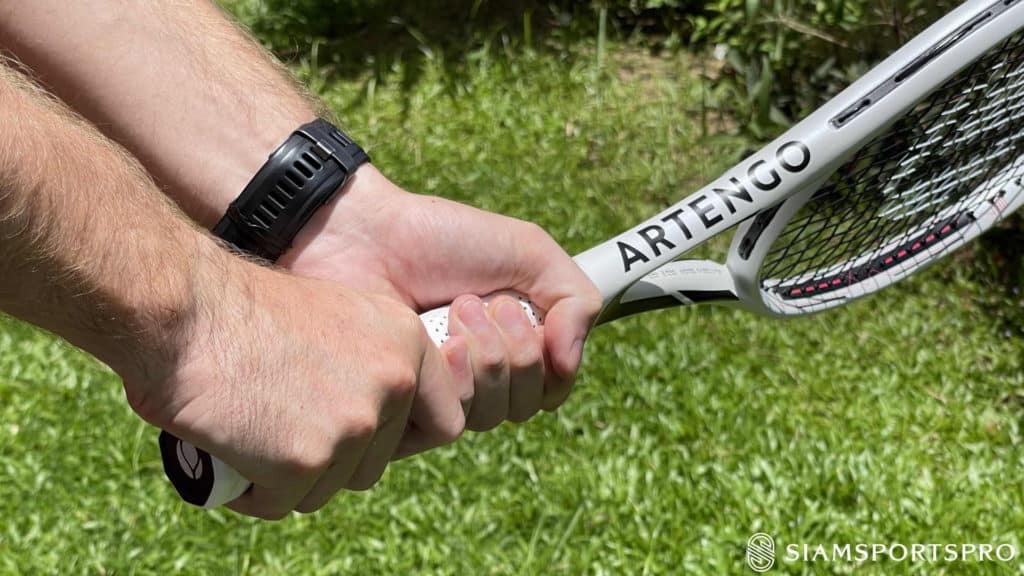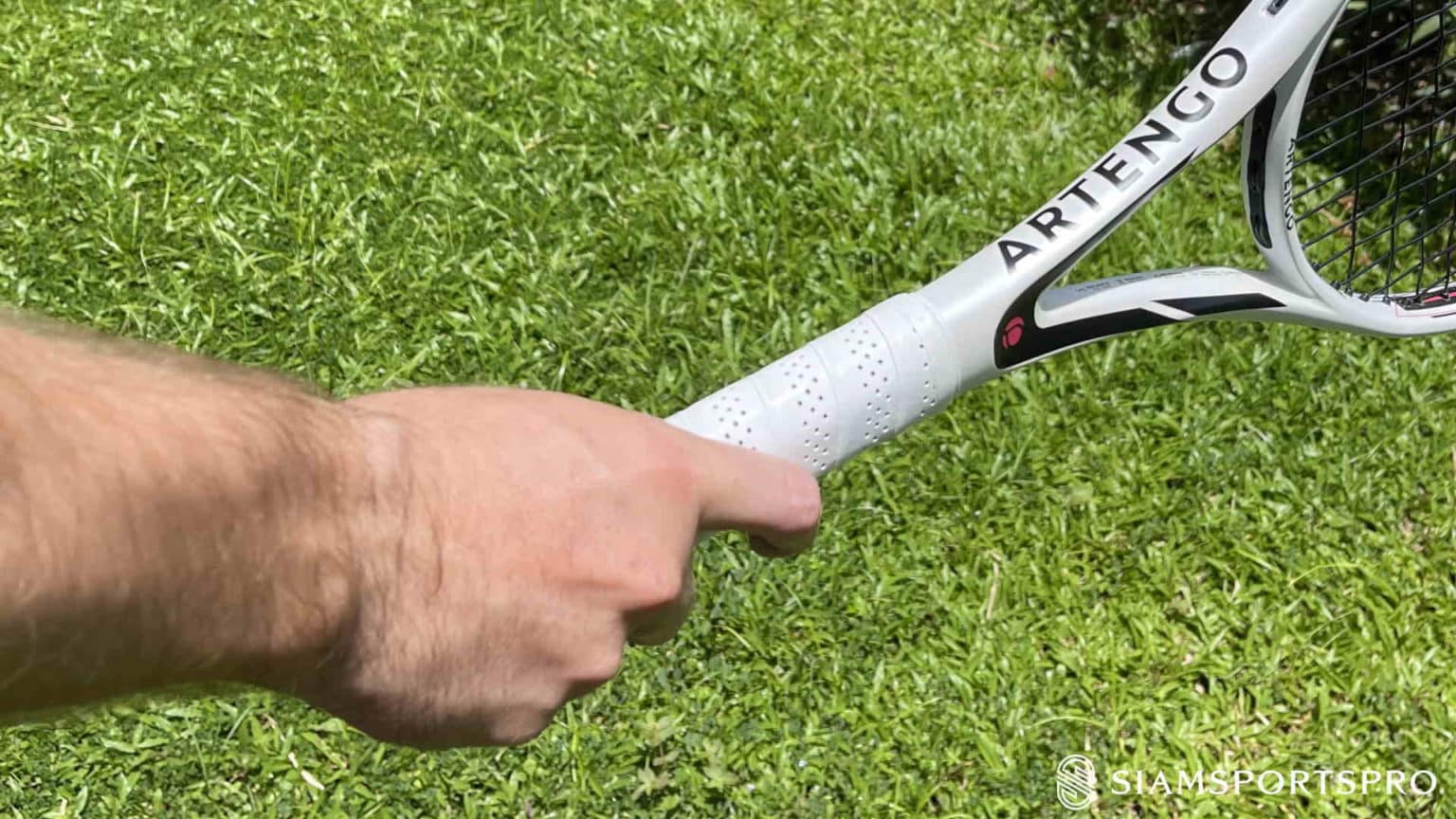As a professional tennis coach, I wish it was as easy as just saying ‘hold it like this’, which really only works for beginners when you first start to learn or if you are only playing for fun. It’s important to know that the way to hold the racket in tennis is firstly about preventing injury and ensuring that we allow the body to move in the way it was biomechanically designed to move.
With us all being different, what works for one person doesn’t always work for others – and in some cases could injure a beginner. Secondly, we want to get the most from our game, so the grips in tennis can help us generate more power, or create more spin on the ball or just gain more control of what we want to racket to do.
Let’s briefly go through 7 common ways to hold your tennis racket:
1. CONTINENTAL GRIP (Chopper grip)
This is the first grip to learn in tennis as it is the grip that we can hit all shots with. As your playing level increases you will find that on your forehand and backhand this grip will change to help you generate more power and spin. However, for your volleys and serve this grip will stay.
2. EASTERN FOREHAND GRIP
This is the most common forehand grip in tennis for club tennis players and for many professional players. This allows you get more spin than with the continental grip and lets you hit the ball faster with the spin bringing the ball back down into the court.
3. SEMI WESTERN FOREHAND GRIP
This grip is a progression from the Eastern forehand grip when players want to be able to generate more top spin on their shots and get a higher bounce on their ball or create better angles.
4. WESTERN FOREHAND GRIP
This grip is the most common grip for players that really like to generate as much spin as humanly possible on their forehand. You find some players like Rafa Nadal who might have this grip but a little more extreme but it depends on how comfortable it is for players and if it is effective. Players that use this grip are normally aggressive baseliners and like to hit heavy top spin with lots of height. Often very common at clubs where they have clay courts and the higher bounce benefits players with a more extreme grip.
5. EASTERN BACKHAND (Single Handed)

This is the most common grip for single handed tennis players when they hit top spin. This allows players to create angles, hit spin and get good variety of ball flights on their backhand. For slices players would use the continental grip as it is the most natural for the wrist for the way you swing on the slice.
6. DOUBLE HANDED BACKHAND (Conventional)

This is the most common grip for players who hit a two handed backhand but this is changing a little with the development of rackets, balls and courts with the desire to hit greater spin and create more angles.
7. DOUBLE HANDED BACKHAND (New)

This is similar to the normal double handed grip but allows the player to drive the racket up the back of the ball more effectively and also to hit the ball at a higher contact height. Very common with players who play on clay courts. Not very common with players who play mostly on carpet or grass courts. Those plays often play more conventional and even use their slice (Continental).
Repeating your incorrect grip with the tennis racket over prolonged periods increases the chance of common tennis injuries such as tennis elbow, rotator cuff tears, pulled muscles, stress fractures and other injuries that will take you out of the game for extended periods, and some may not heal completely without physiotherapy or other regular medical treatment. In very serious cases, particularly with rotator cuff tears where pain persists, surgery is needed to reattach the tendons correctly.
In conclusion, remember: correct grip at the right time will ensure you avoid injury while delivering your intended shot consistently. Simply how to hold the racket and when helps beginner players avoid injuries the most, and is not commonly listed in articles giving advice on how to avoid injuries. It can be overlooked or only seen as something to be done when a player gets more advanced, thus not a priority.





